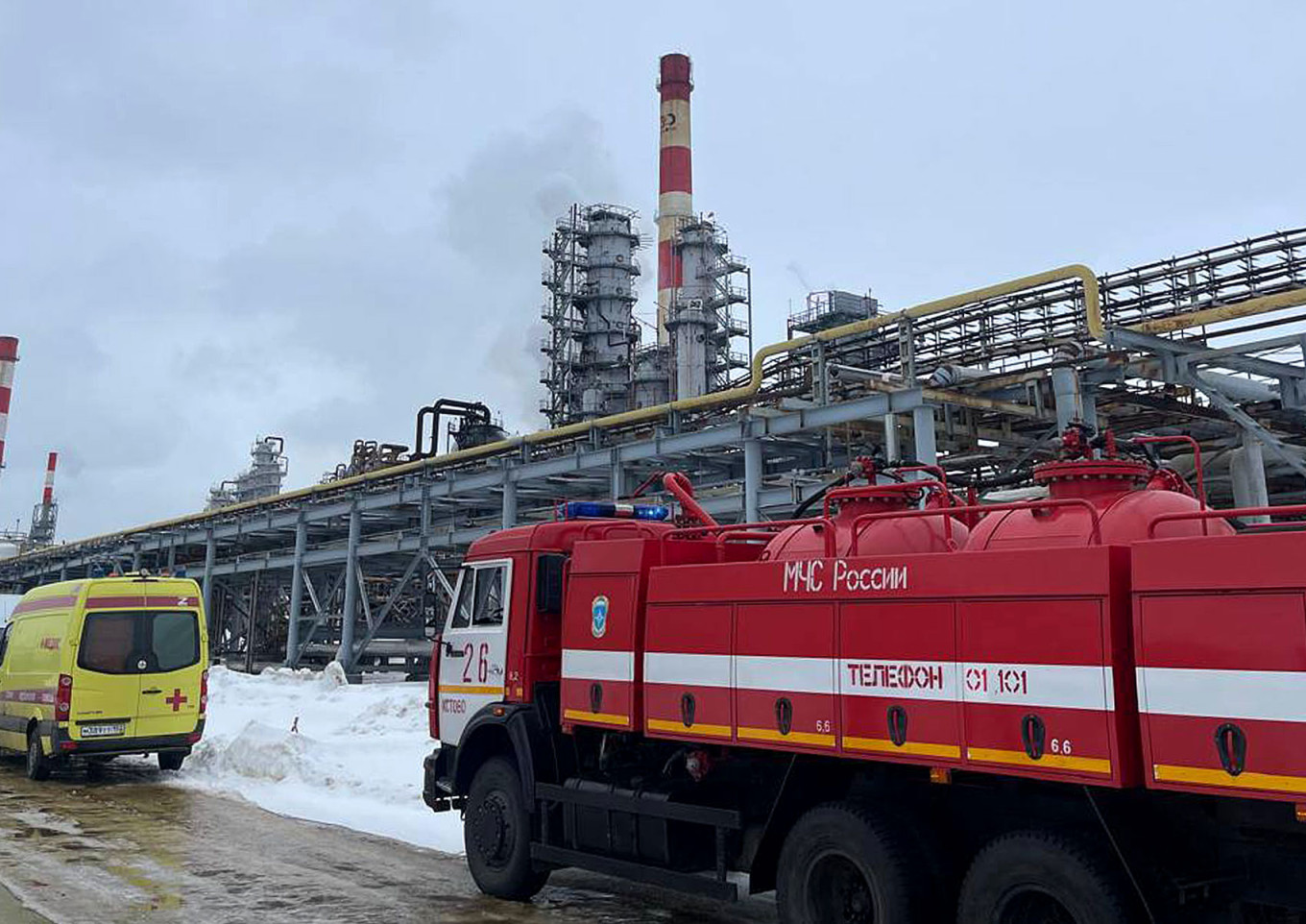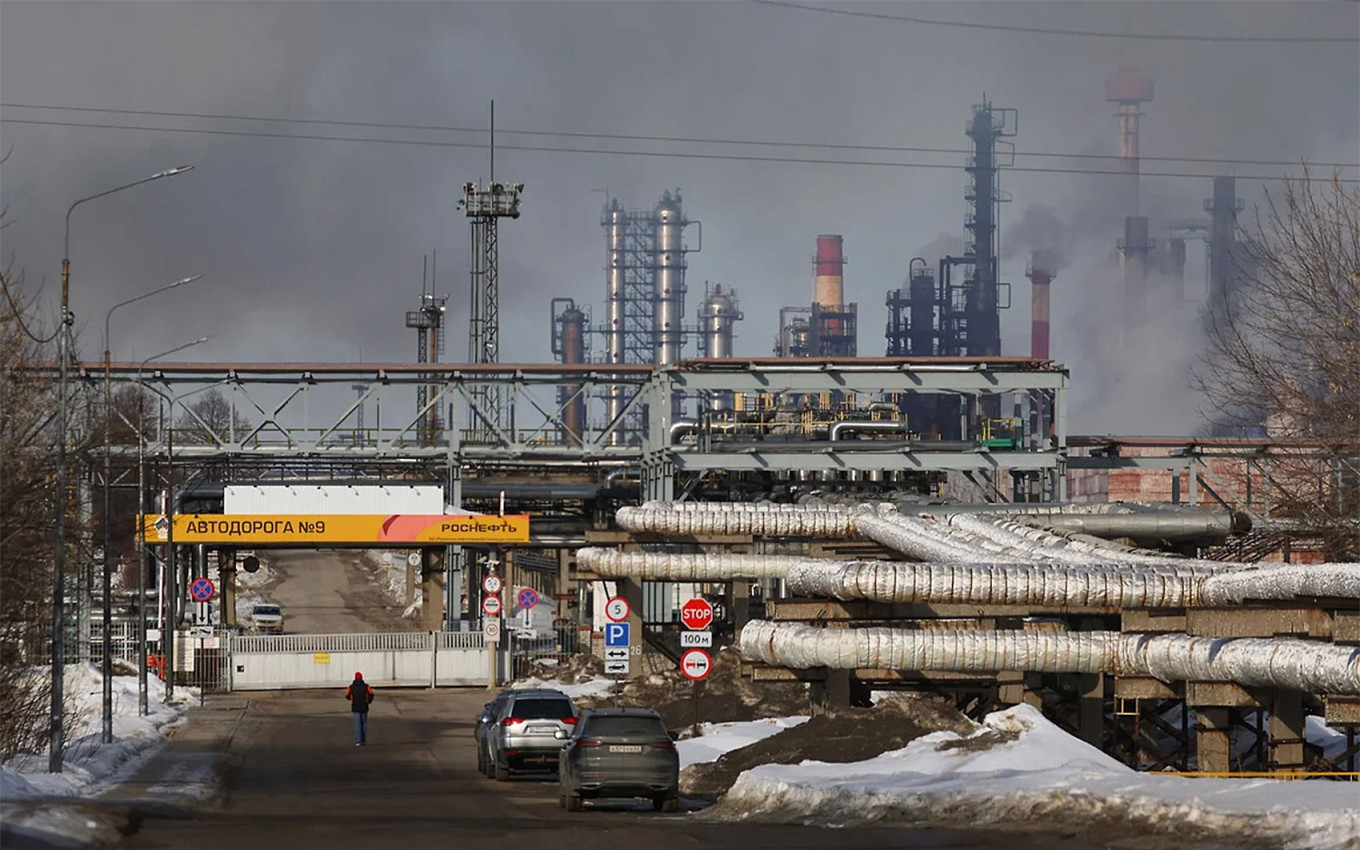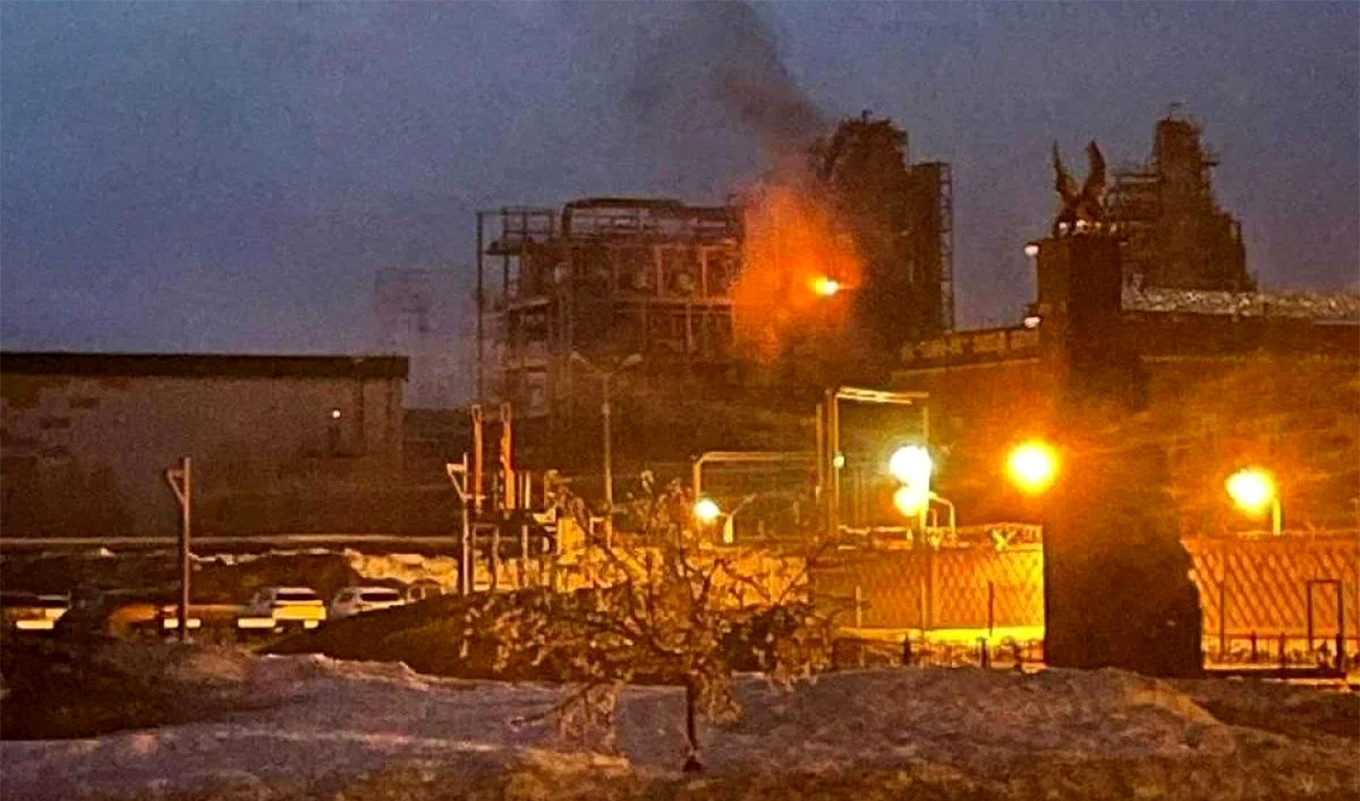Ukraine has escalated its drone attacks on Russian oil refineries since the beginning of the year in an effort to cripple Russia’s economy and constrain fuel supplies to its military.
Despite the increased intensity of these strikes, experts who spoke to The Moscow Times agree that their impact on the Russian economy has so far been negligible. However, they said Russia’s energy infrastructure is becoming increasingly vulnerable to these inexpensive, difficult-to-intercept attacks.
Expanding attack range
Since the start of the full-scale invasion of Ukraine, Russian energy infrastructure has been attacked over 37 times, with about 80% of these attacks hitting their target, according to Deutsche Welle.
Drone attacks have intensified in recent months, reaching major oil refineries deep inside Russian territory.
In January, an attack hit a major gas export terminal in Ust-Luga near St. Peterburg, about 900 kilometers from the Ukrainian border, affecting its operations for several weeks.
The attacks reached a peak in March when a Lukoil refinery in Nizhny Novgorod was hit, cutting its production capacity by 50%. A Rosneft refinery in Ryazan, which alone is responsible for 6% of the country’s gasoline production, was also heavily damaged a day later.

In one of the latest cases, on April 2, drones targeted Russia’s third-largest refinery in the republic of Tatarstan, some 1,300 kilometers from the Ukrainian border.
This latest strike showed for the first time Ukraine’s ability to strike over 1,000 kilometers deep into the enemy’s territory, an area encompassing most of European Russia.
Impact on the economy
The primary aim of Ukrainian drone attacks seems to be to harm Russia’s energy sector, which, despite Western sanctions, remains a key revenue source for the Kremlin. Additionally, these raids serve as direct retaliation for Russia’s airstrikes on Ukraine’s power grid, a campaign that has escalated in recent weeks.
According to the Financial Times, the U.S. urged Ukraine to stop striking Russian refineries because of concerns that they could drive up global oil prices. Despite this appeal, the attacks have persisted.
“If there is no air defense to protect our power grid, and the Russians are attacking it, my question is: why can’t we answer them?” Ukrainian President Volodymyr Zelensky said in a recent interview. “Their society must learn to live without gasoline, without diesel, without electricity. It’s fair.”
According to Reuters’ calculations, in March about 14% of Russia’s oil refinery capacity was shut down due to the Ukrainian drone attacks, resulting in a roughly 12% decline of gasoline production. As a result, gasoline prices have reached a six-month high in early April.

However, according to experts, it is unlikely that the Russian military will experience a fuel shortage in the foreseeable future.
“The [fuel] supply for the front is the priority for the Russian government,” oil and gas analyst Mikhail Krutikin told The Moscow Times.
The attacks are also unlikely to lead to domestic shortages. According to official data from the Russian Energy Ministry, the country’s diesel production was twice as high as domestic demand in March. The gasoline surplus capacity was about 20-25% before the attacks, according to estimates by oil and gas expert Sergey Vakulenko.
“Even in a scenario where they take down all these refineries [within Ukraine’s attack range], Russia would still have enough fuel to supply the army, public transports and agriculture,” said Vakulenko.
The Russian government imposed a six-month ban on gasoline exports effective from March 1, to address the potential threat of rising fuel prices amid seasonal increases in demand. Additionally, Russia has entered negotiations with Belarus to increase gasoline imports, Reuters reported.
Drone attacks have led to reduced exports of refined petroleum products.
Bloomberg reported that seaborne diesel exports will be down 21% in April, a five-month low.
However, Vakulenko noted that this may not impact the state budget because Russia can compensate for decreases in refined petroleum product exports by increasing its export of crude oil. Additionally, the companies that own the refineries continue to pay an oil extraction tax despite the attacks.
“Some people think that by attacking oil refineries, the related export revenue disappears, but that is not true. It just turns into revenue from crude oil export,” Vakulenko told The Moscow Times.
Despite the minimal impact on energy revenues, Ukrainian drones are inflicting serious damage to Russia’s infrastructure.
“It’s easier for Ukraine to attack the installation of Russian oil refineries than for Russia to repair them,” said Vakulenko.
According to Vakulenko’s estimates, repairs can cost tens of millions of dollars while a single drone attack’s cost ranges in the hundreds of thousands of dollars. Depending on the extent of the damage, repairs can take anywhere from a few weeks to several months.
Ukrainian attacks have focused on primary distillation units, vital components through which crude oil is funneled into refineries.
“They are the gates to the refineries. When gates are destroyed, the crude oil cannot pass through,” said oil and gas expert Mikhail Krutikhin.
Two of these installations were damaged in the Ryazan oil refinery on March 13, one of which has already been reactivated.
Experts agreed that the long-term outcome of these attacks on the Russian economy will ultimately depend on Ukraine’s capacity to maintain the intensity of these attacks versus Russia’s ability to repair the refineries quickly.
War of attrition
Ukraine is effectively deploying drones within the context of a war of attrition, experts say. In this scenario, unable to claim victory, both sides aim to wear down the enemy’s defense, economic and industrial capabilities while expending minimal resources.
As the supply of weapons from the West has dried up in recent months, Ukraine has scaled up domestic production of low-cost drones.
“It is the only really effective weapon that Ukraine can autonomously produce on a mass scale,” military analyst Dmitry Kuznets told The Moscow Times.
Besides the low cost of production, the drones’ main advantage is that they can be produced in small facilities easily hidden from Russian air strikes.
Protecting oil refineries from drone attacks on a territory as vast as Russia’s is a complicated task.
Radio-electronic warfare systems struggle to counter these drones, as they often rely on self-contained navigation systems, which are less precise than GPS-guided systems but cannot be jammed.
Ukraine is reportedly incorporating AI components into its drones to improve attack precision without relying on satellite communication, which would leave them vulnerable to signal jamming.

Forcing Russia to divert air defense capabilities like its Pantsir anti-aircraft systems from military objects to protect refineries appears to be part of the strategy behind these attacks, analysts agreed.
“Short-range systems like Pantsir are highly needed in other places, on the frontline,” said Pavel Aksyonov, a defense correspondent for the BBC’s Russian service.
Moreover, given the high cost of air defense missiles, they are not suitable for countering low-cost drones. As a result, mobile groups equipped with anti-aircraft guns are reportedly being set up as a cheaper alternative to combat drone threats.
Following the latest attack, Tatarstan leader Rustam Minnikhanov urged companies to rely on themselves for their defense.
“Do not wait for the air defense response; it has other missions,” he said. “We must find our own solution, every company, every municipality and every town.”
According to the investigative news site IStories, Russian energy companies invested about 1 billion rubles ($10.8 million) on anti-drone systems, including anti-drone guns, electronic detection systems and protective structures, in the last year.
However, analysts said the country lacks an effective and systematic response to drone attacks.
“Decisions from the top are required for organizing a very large and complex defense system,” said military analyst Yan Matveev.
In the meantime, drone strikes on Russian territory have had a significant psychological impact. Their effect is “bringing the war onto Russian territory” and exposing the vulnerability of Russia’s defenses.
“Each of those successful attacks generates fire, footage and talks about how the Russian air defense cannot protect anything,” said Matveev.
“It is spectacular. It warms the soul of a Ukrainian viewer and upsets Russians who are living nearby,” Vakulenko said.